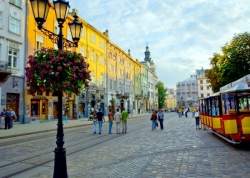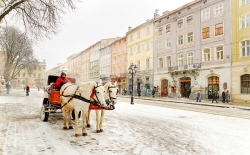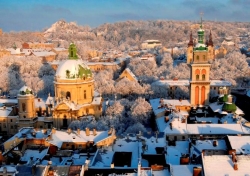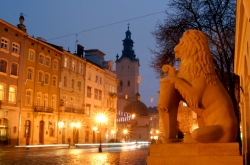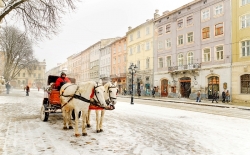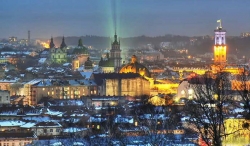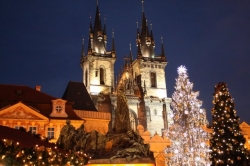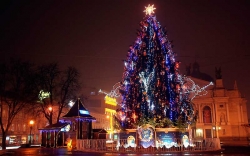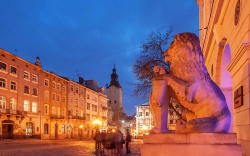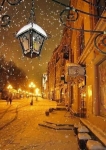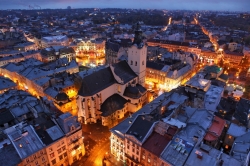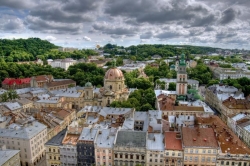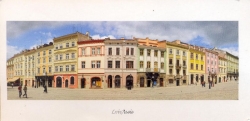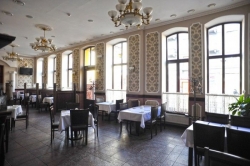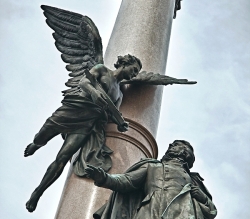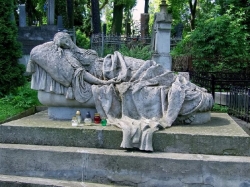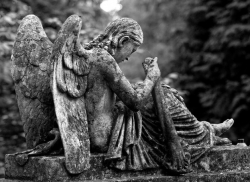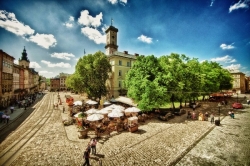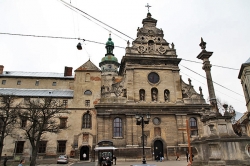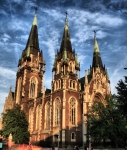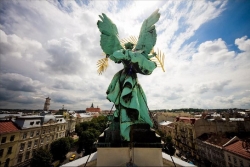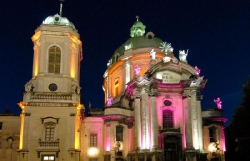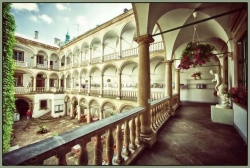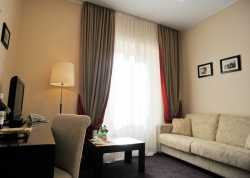Common description
Lviv "a city of sleeping lions", which has changed so many names throughout it's long history, today remains one of the most charming and mysterious beauties of Eastern Europe. It is the only Ukrainian "Ensemble of the Historic Centre" included in the UNESCO World Heritage List.
Lviv is a city in western Ukraine. The city is regarded as one of the main cultural centres of today's Ukraine and historically has also been a major Polish and Jewish cultural center. The historical heart of Lviv with its old buildings and cobblestone roads has survived World War II. The city has many industries and institutions of higher education such as the Lviv University and the Lviv Polytechnic. Lviv is also a home to many world-class cultural institutions, including a philharmonic orchestra and the famous Lviv Theatre of Opera and Ballet. Lviv celebrated its 750th anniversary with a son et lumière in the city centre in September 2006.
There are works by artists of the Vienna Secession, Art Nouveau and Art Deco. The buildings have many stone sculptures and carvings, particularly on large doors, which are hundreds of years old. The remains of old churches dot the central cityscape. Some three- to five-storey buildings have hidden inner courtyards and grottoes in various states of repair. Some cemeteries are of interest: for example the Lychakivskiy Cemetery where the Polish elite were buried for centuries. Leaving the central area the architectural style changes radically as Soviet-era high-rise blocks dominate. In the centre of the city the Soviet era is reflected mainly in a few modern-style national monuments and sculptures.
On 12 June 2009 the Ukrainian magazine Focus assessed Lviv as the best Ukrainian city to live in. Its more Western European flavor lends it the nickname the "Little Paris of Ukraine".
A city of sleeping lions, which has changed so many names throughout it's long history, today remains one of the most charming and mysterious beauties of Eastern Europe. It is the only Ukrainian "Ensemble of the Historic Centre" included in the UNESCO World Heritage List.
Lviv is a city in western Ukraine. The city is regarded as one of the main cultural centres of today's Ukraine and historically has also been a major Polish and Jewish cultural center. The historical heart of Lviv with its old buildings and cobblestone roads has survived World War II. The city has many industries and institutions of higher education such as the Lviv University and the Lviv Polytechnic. Lviv is also a home to many world-class cultural institutions, including a philharmonic orchestra and the famous Lviv Theatre of Opera and Ballet. Lviv celebrated its 750th anniversary with a son et lumière in the city centre in September 2006.
There are works by artists of the Vienna Secession, Art Nouveau and Art Deco. The buildings have many stone sculptures and carvings, particularly on large doors, which are hundreds of years old. The remains of old churches dot the central cityscape. Some three- to five-storey buildings have hidden inner courtyards and grottoes in various states of repair. Some cemeteries are of interest: for example the Lychakivskiy Cemetery where the Polish elite were buried for centuries. Leaving the central area the architectural style changes radically as Soviet-era high-rise blocks dominate. In the centre of the city the Soviet era is reflected mainly in a few modern-style national monuments and sculptures.
On 12 June 2009 the Ukrainian magazine Focus assessed Lviv as the best Ukrainian city to live in. Its more Western European flavor lends it the nickname the "Little Paris of Ukraine".
Lviv is a city in western Ukraine. The city is regarded as one of the main cultural centres of today's Ukraine and historically has also been a major Polish and Jewish cultural center. The historical heart of Lviv with its old buildings and cobblestone roads has survived World War II. The city has many industries and institutions of higher education such as the Lviv University and the Lviv Polytechnic. Lviv is also a home to many world-class cultural institutions, including a philharmonic orchestra and the famous Lviv Theatre of Opera and Ballet. Lviv celebrated its 750th anniversary with a son et lumière in the city centre in September 2006.
There are works by artists of the Vienna Secession, Art Nouveau and Art Deco. The buildings have many stone sculptures and carvings, particularly on large doors, which are hundreds of years old. The remains of old churches dot the central cityscape. Some three- to five-storey buildings have hidden inner courtyards and grottoes in various states of repair. Some cemeteries are of interest: for example the Lychakivskiy Cemetery where the Polish elite were buried for centuries. Leaving the central area the architectural style changes radically as Soviet-era high-rise blocks dominate. In the centre of the city the Soviet era is reflected mainly in a few modern-style national monuments and sculptures.
On 12 June 2009 the Ukrainian magazine Focus assessed Lviv as the best Ukrainian city to live in. Its more Western European flavor lends it the nickname the "Little Paris of Ukraine".
A city of sleeping lions, which has changed so many names throughout it's long history, today remains one of the most charming and mysterious beauties of Eastern Europe. It is the only Ukrainian "Ensemble of the Historic Centre" included in the UNESCO World Heritage List.
Lviv is a city in western Ukraine. The city is regarded as one of the main cultural centres of today's Ukraine and historically has also been a major Polish and Jewish cultural center. The historical heart of Lviv with its old buildings and cobblestone roads has survived World War II. The city has many industries and institutions of higher education such as the Lviv University and the Lviv Polytechnic. Lviv is also a home to many world-class cultural institutions, including a philharmonic orchestra and the famous Lviv Theatre of Opera and Ballet. Lviv celebrated its 750th anniversary with a son et lumière in the city centre in September 2006.
There are works by artists of the Vienna Secession, Art Nouveau and Art Deco. The buildings have many stone sculptures and carvings, particularly on large doors, which are hundreds of years old. The remains of old churches dot the central cityscape. Some three- to five-storey buildings have hidden inner courtyards and grottoes in various states of repair. Some cemeteries are of interest: for example the Lychakivskiy Cemetery where the Polish elite were buried for centuries. Leaving the central area the architectural style changes radically as Soviet-era high-rise blocks dominate. In the centre of the city the Soviet era is reflected mainly in a few modern-style national monuments and sculptures.
On 12 June 2009 the Ukrainian magazine Focus assessed Lviv as the best Ukrainian city to live in. Its more Western European flavor lends it the nickname the "Little Paris of Ukraine".
Lviv on map
+ 1°C




